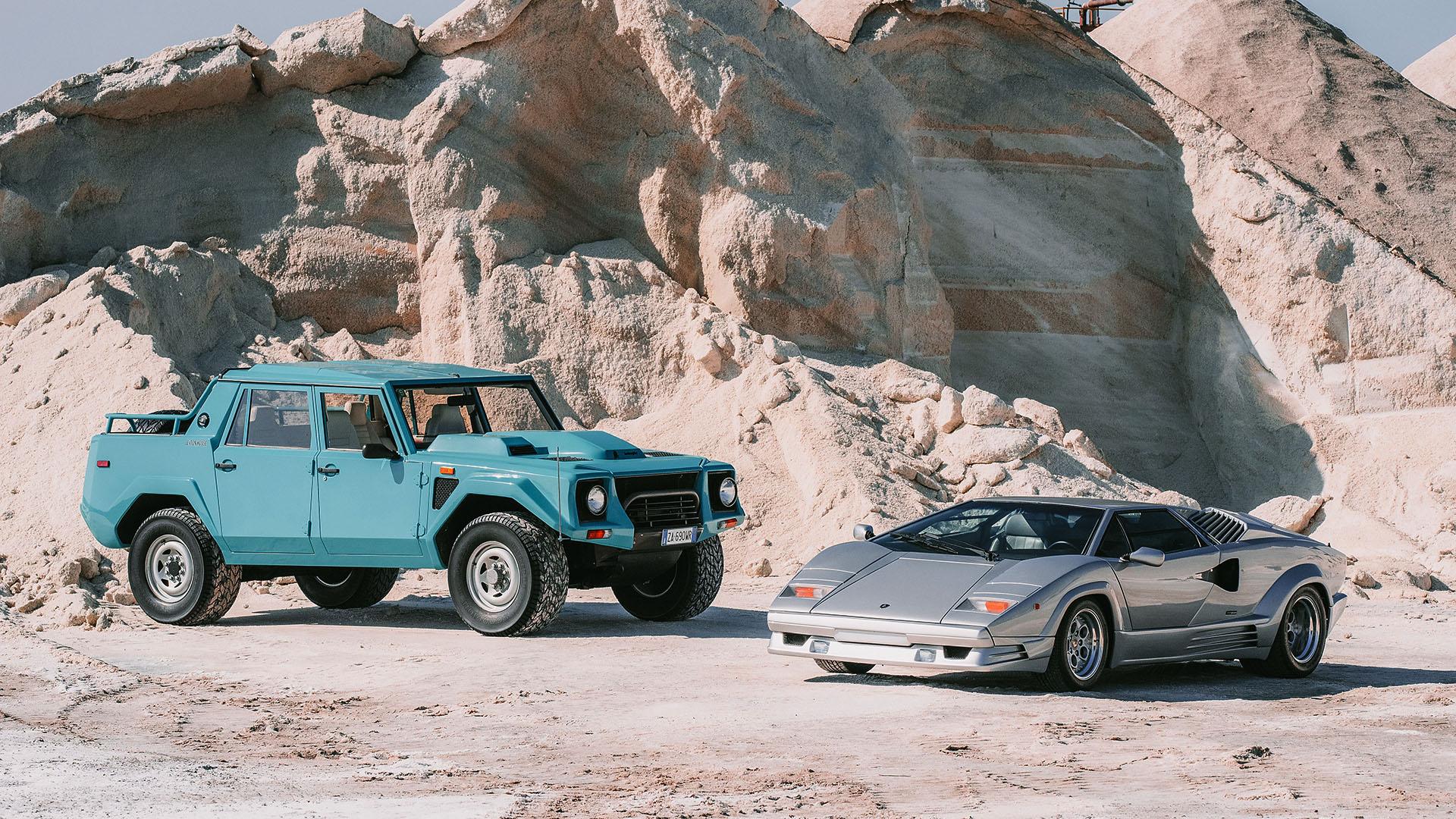Nearly 40 years ago Lamborghini had two cars in production, the legendary Lamborghini Countach, of which the 50th-anniversary homage has just been unveiled during the Monterey Car Week as the limited edition Countach LPI 800-4, but they also had the Lamborghini Jalpa on the assembly line in Sant’Agata during the Eighties, from 1981 right up to 1988, the Jalpa was a 3.5-Liter V8 powered ‘Baby Bull’, a kind of entry-level into the world of Lamborghini while the Countach was the V12 flagship model, a third model joined from 1986 on as the LM002, but that’s an entirely different story altogether, let’s get back to the Baby Lamborghini.

In the early Seventies, Lamborghini already had the idea to build a smaller, less powerful, and most importantly, cheaper alternative to the V12 flagship models, and in 1972 the Lamborghini Urraco was introduced, a 2.5-Liter V8 model with 220 hp at 7,500 rpm, a little low on power perhaps, but still more than enough at that time, in the end, they managed to sell 510 units. Because of high taxes on cars over 2-liter displacement in Italy, Lamborghini even created an Urraco P200, the 2-liter V8 with only 182 hp at 7,500 rpm … only 66 units would ever be sold making it the rarest of the Urraco today. By 1972 the Lamborghini Urraco had grown up, workmanship improved and a 3-Liter engine with a very nice 250 hp at 7,500 rpm was fitted into what’s known as the Urraco P300, still, only 190 units got sold.

But the best was yet to come, in 1976 Lamborghini presented the Silhouette P300, arguably the best-looking V8 made to date, with wide wheel arches, massive rear wheels inspired by the Bravo wheels, also seen on the early Countach S models … nicknamed the ‘telephone dial’ wheels, these are highly sought-after today, and have become both rare, and very expensive, but back to the Silhouette, a car that was created by Lamborghini because they couldn’t afford to build a successor to the Urraco as an entry-level model, and while the main attraction on this new Silhouette was the fact it came with a removable roof panel, Automobili Ferruccio Lamborghini SpA couldn’t convince customers to buy the Silhouette, even worse was the fact the company was unable to certify the Silhouette for sale in the United States, possibly the biggest market for this kind of Lamborghini. Note that from 1977 until 1982 not a single Lamborghini was officially imported into the United States apart from some grey-market cars … only 52 units were ever built.

Things started to look ‘not so good’ for Automobili Lamborghini Spa, and by 1981, when the Jalpa was unveiled, Ferruccio had already sold his shares of the Raging Bull company, it was now called Nuovo Automobili Lamborghini SpA, The Jalpa prototype showed color-coded bumpers and brand new, 16-inch wheels … only the wheels would be retained, the production version of the Jalpa was to receive black bumpers to the front and rear, a black engine cover and similar black finished air intakes just behind the side windows, also early Jalpa would use the taillights from the Silhouette until the 1984 Geneva Auto Show, when a few changes were presented, the black engine cover and side air intakes were now color-coded to the rest of the body and the taillights became circular units.

Over the seven-year production life of the Lamborghini Jalpa, only 410 units would be sold, one of the main reasons for its rather low sales figures was probably the competition, by the time the Jalpa was available to the public in 1982, Ferrari had launched the 308 model that was later replaced by the 328 series, both would be available in GTS version, and it was a serious competitor in the market the Jalpa was intended for, add the successful Porsche 911 that remained in production for ages, and you had two major counterparts to choose from, and let’s be honest about this, next to the legendary Countach, the Jalpa looked a lot less impressive … and it is still known today as the Baby Lamborghini, the car to buy if you couldn’t afford the Countach.

But things have changed over the years, and Lamborghini reinstated the ‘Baby Bull’ with the Gallardo in 2003, now powered by a V10 engine, it was once again the entry-level model into the world of Lamborghini ownership, and she became the best selling model ever with 14,022 units sold before the Huracán took over in 2014, again a V10 model next to the flagship V12, and once again the little Bull sold like crazy, and it’s still selling very well today.
Check out the video from Doug DeMuro below for some current driving impressions of a 35-year-old Italian beauty:



